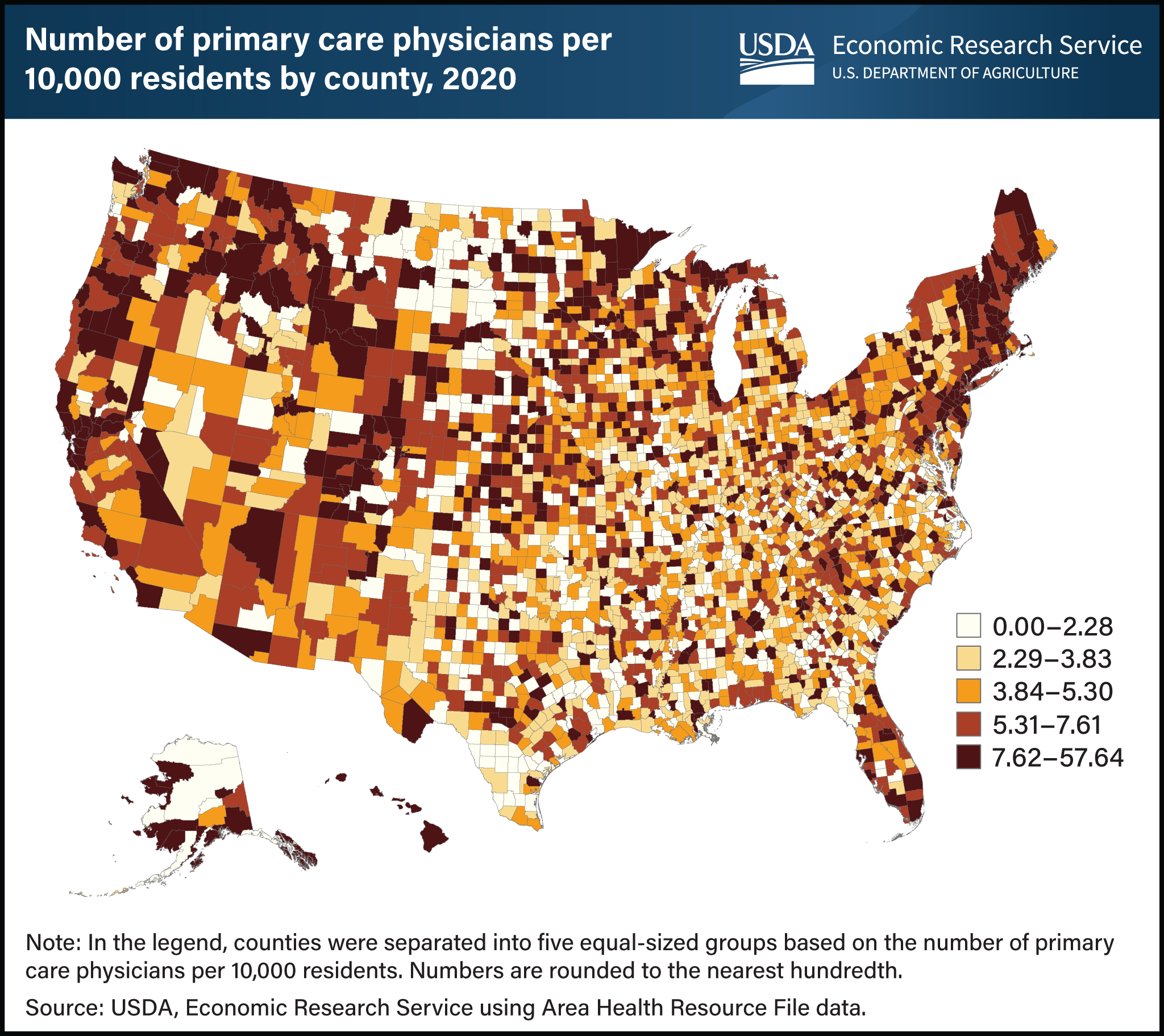Access to primary care physicians varies across United States
- by John Pender
- 6/22/2023

The number of primary care physicians per 10,000 residents is generally higher in much of the Northeast, along the West Coast, in Hawaii, and parts of the mountainous West and upper Midwest. The availability of primary care physicians per capita is generally lower in much of the Great Plains—especially the Southern Great Plains—and the Lower Mississippi Delta and Southeast. However, there are substantial variations in the availability of physicians within these regions. For instance, in rural counties, there are fewer physicians per capita in counties adjacent to urban counties than in those farther from urban areas. This is likely because residents travel from nearby rural areas to urban doctors. The lowest rates of physicians per capita are in rural counties with an urban population of less than 2,500. This chart updates data appearing in the USDA, Economic Research Service report Linkages Between Rural Community Capitals and Healthcare Provision: A Survey of Small Rural Towns in Three U.S. Regions published in March 2023.
We’d welcome your feedback!
Would you be willing to answer a few quick questions about your experience?

